L2.4: Electrical characteristics: driving LED from digital outputs [P2] Seven-segment decoders (HEX_7seg_decoder), plan A, plan B |
[29 Sept] |
1.6.5. Driving LED
This "Circuit_logic_levels.pdsprj" is a circuit to play with LED, and to observe how when a logic gate is sinking too much current, the voltage levels are degraded. Measure voltage levels, currents, power consumption and logic values.
1.6.5.1. LED biasing characteristics.
1.6.5.2. Active-low and active-high outputs
1.6.5.3. Limiting resistor for worst-case scenario
How to drive LED from logic gates? rec.
Fig. 1 shows some typical LS-TTL values to consider when modelling inputs and outputs at DC or low frequency of operation. Gate outputs are equivalent to voltage sources with typical VOH or VOL margins.
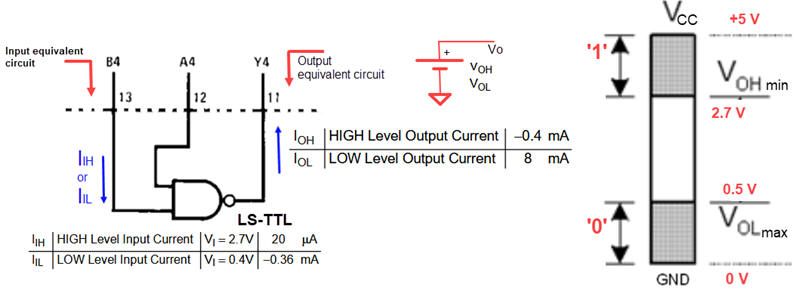 |
| Fig. 1. Typical input and output current values for LS-TTL family. |
Two circuits are possible: active-high (common cathode LED) and active-low (common anode LED).
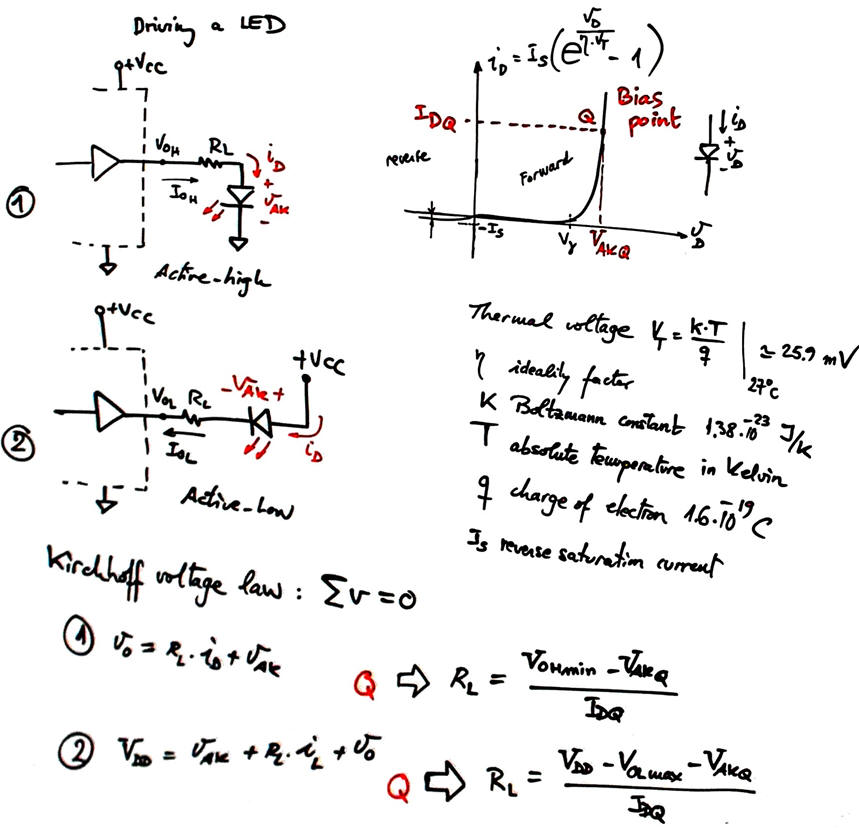 |
| Fig. 2. Driving a LED active-high and active-low and calculating limiting resistors. The idea is to guarantee the LED bias point Q (IDQ, VAKQ) even in the worst case scenario. |
For instance, selecting a Rohm semiconductor SMT LED SML-P11VTT86(R) and using CMOS or TTL-LS buffers or inverters:
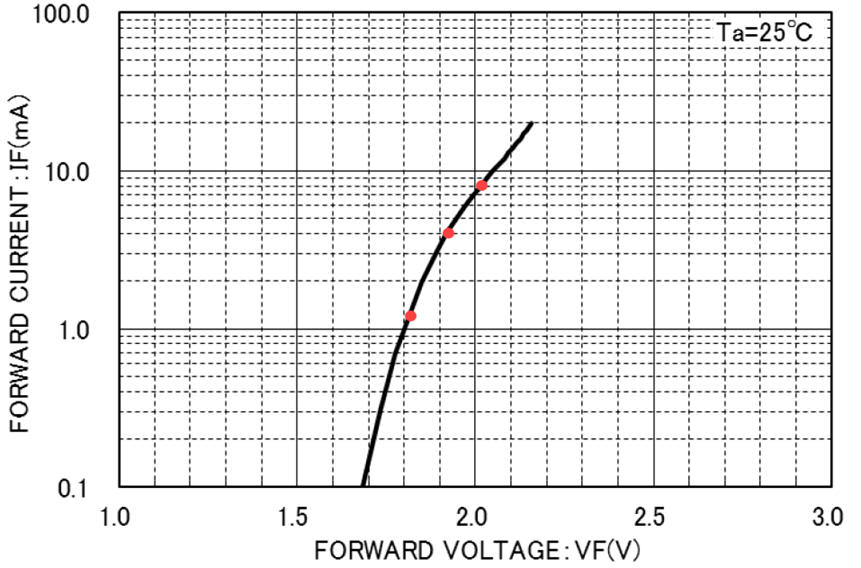 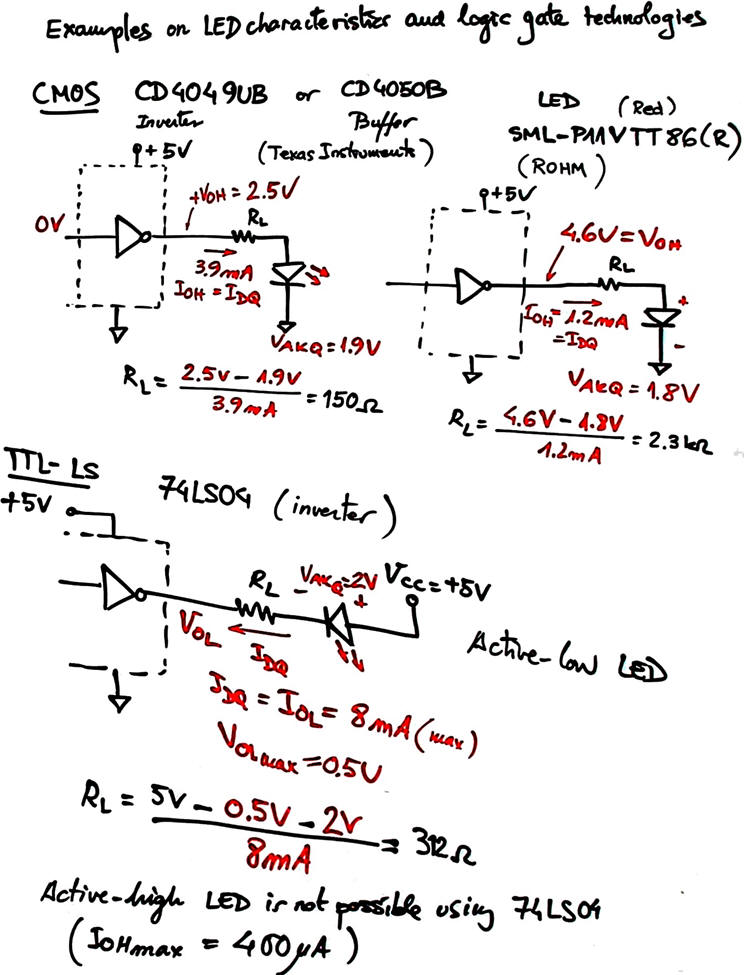 |
| Fig. 3. Example values. Use Proteus simulations or protoboards to demonstrate such results in the laboratory. |
This is another typical LED datasheet.
This is another version of Circuit_W in Proteus where you can add to Chip1 some buttons, switches, LED's and even relays and motors. Play with the circuit and pay attention to the real voltages and currents that represent '0' and '1' signals.
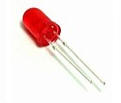 |
| Fig. 4. Red LED. |
How to drive high-voltage and high current power LED ?
1.6.6. Driving 7-segment displays
- How to drive a 7-segment common-anode or common-cathode display?
 |
| Fig. 5. Green 7-segment display |
1.6.6.1. Common anode digits
1.6.6.2. Common cathode digits
1.6.6.3. Multiplexed operation
1.7.6. Hexadecimal to 7-segment decoder (P2) Hex_7seg_decoder
1.7.6.1. Basic decoder as standard component
It is a circuit to drive the typical 7-segment displays. Run the circuit "Dec_hex_7seg.pdsprj" in Proteus to figure out how it works and infer its truth table.
1.7.6.2. Control signals: blanking (BI), ripple blanking (RBI, RBO), lamp test (LT)
1.7.6.3. Commercial chips
Type 74LS47 (active-low outputs for common anode display), HEF4511B (active-high outputs for common cathode display), etc.
1.7.6.4. Design examples
And, again, two alternative and systematic design plans are presented:
- Plan A. HEX_7seg_decoder . Using a structural approach based on minimised equations (SoP / PoS).
- Plan B. HEX_7seg_decoder. Using a behavioural (high-level) description (truth table or algorithm) approach.
Exercise: Calculate the limiting resistor of a common anode LED circuit for both technologies CMOS and LS-TTL operating with VCC = 5 V. The bias point is IDQ = 6 mA, VAKQ = 2.1 V.
Simulate the circuits in Proteus to verify the LED bias point when lighting (use voltmeter and ammeter).


